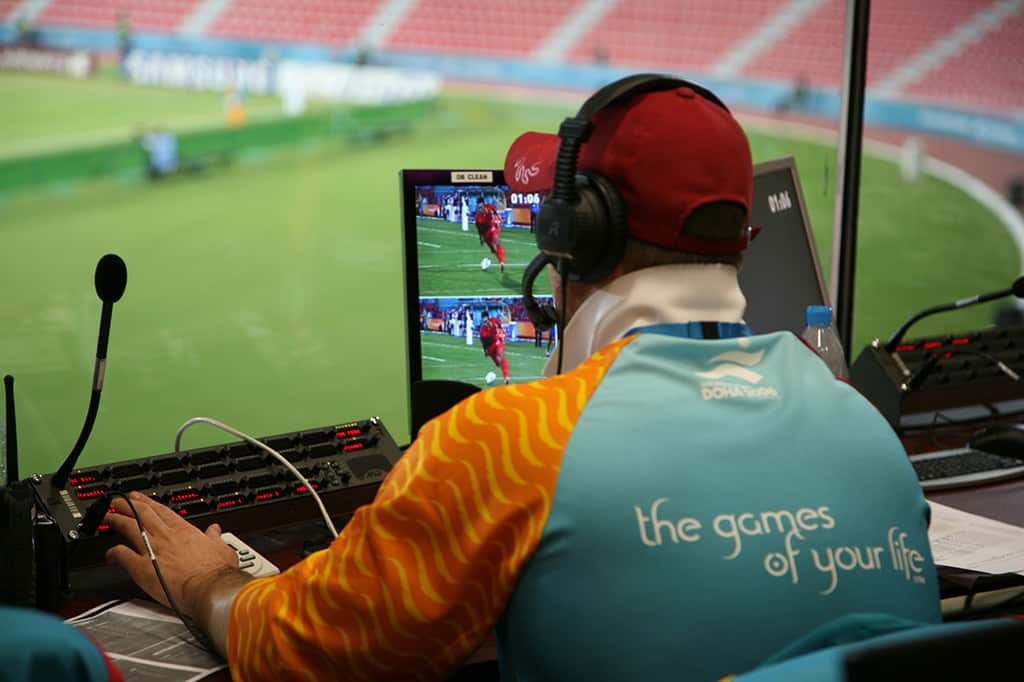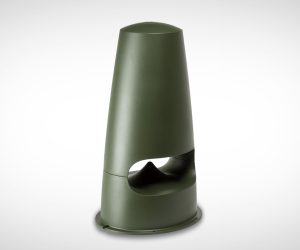
Can You Hear Me Now? Part 2
Effective Production Communications.
Tutorial:/ Cameron O’Neill
Last issue, we looked into the most simple of production communication systems, the partyline, which has become the de facto standard for production communications for about 70 years. While there have been innovations over the years, the basic concept has remained the same: connect everyone who needs to talk to each other onto the same line.
But what about when you need a little more control? Even a modest production has multiple, cross-functional teams that need to talk to each other, but not necessarily to everyone. With a traditional partyline system you would find it hard to get a word in edgewise.
ENTER THE MATRIX
A number of companies started working on solutions to this problem from as early as the ’60s. At that point, TV stations were the main driver of the new systems. The initial approach was to have a system with multiple partylines that could easily be re-assigned to different groups, and these went on to form the basis of the first matrix systems.
By the 1970s there were a number of offerings available to be installed in your TV station or rocket launch complex. These usually had a large central frame of audio crosspoint switches to handle all of the routing. Hence, they were rarely found in the event or touring industry as they were simply too large, complex, fragile and expensive to take out of the equipment room.
Unlike those early, physically-switched systems, a modern matrix communications system works in a similar fashion to an audio matrix mixer, where any of the system inputs can be sent at any level to any or all of the system outputs.
EXTRACTING THE DIGITS
With lower bandwidth and fidelity requirements, the telecommunications companies were well ahead of the pro audio market in adopting digital audio. In the 1960s both RCA and Bell Laboratories were experimenting with what would become the cornerstone for much of the digital audio market – Time Division Multiplexing (TDM). TDM shares the same stream between multiple signals by allocating each signal its own narrow time slot in the data stream and sending a compressed burst of each signal during its allotted time. By knowing the time slot allocation schedule, you can select which of the signals you want to listen to.

THE KEY GAME
When multiple partyline systems became an important part of many productions, the more central personnel needed a communications station with a separate talk key for each partyline, and thus the concept of the Key Station was born.
Key Stations are the main user interface for modern Matrix systems. They are comprised of a number of assignable buttons: one button might call everyone in the system, the next might just talk to the lighting department. The flexibility of these systems also lets you limit a conversation to two people; a company secretary on-stage at an AGM might be able to talk to an assistant at the mix position without anyone else hearing.
Each Key Station is connected directly via an appropriate cable to a ‘port’ on the matrix. Most systems these days will allow a port to be pretty much anything; a key station, a partyline, a wireless system or an interface to a radio, telephone or Internet system. While early matrix systems had tens of ports, modern systems could have hundreds on a single physical matrix.
CENTRALISED OR DISTRIBUTED?
Many of the competing communications companies have now headed down the path of standardised cabling (using coax or UTP). Easy-to-use software made it possible for matrices to be used outside the TV studios, so theatres, productions and events all started augmenting their partyline systems with matrices. Larger productions were already pushing the limits of what partyline could be used for, and so the power of a matrix was a welcome relief. Since most matrices also include the ability to alter the levels of the distributed signals, they have also been used to replace or augment paging and audience recall systems.
The downside of a matrix system is that all of the participating devices need to be cabled back to the actual matrix processor. On a production or an event this usually isn’t such a problem. However, when installing a permanent system into an existing building, or running an event over a large physical area, things start getting hard.
A number of the systems on the market today allow you to link multiple matrices together via fibre – thus decentralising them and allowing the systems to become truly vast in both numbers of stations and geographic spread. In these systems, every port has access to every other port. Suddenly the show caller in the main room can call the AV operators in the break-out rooms to let them know the main session is about to finish, or the master control operator can let the director know they’re on air.
WHEN YOU WOULD USE A MATRIX?
Matrices are big, and they are powerful. However, they’re not for everyone. A partyline system will still cover you for most events, up to about 10 people per partyline. Given that most partyline master stations cover two to four channels, that’s about 20-40 people (although I usually stick to 20-30).
Matrices become really useful when the level of complexity in an event goes up. When you’ve got more than three ‘teams’ (say, lighting, audio and staging), you should probably start looking at a matrix. When you’ve got a show caller who is continuously telling everyone else to stop talking, then you probably need a matrix. And as soon as you start involving a broadcast system, you’re almost definitely talking about a matrix. In fact, as soon as you call in an outside broadcast truck, you’re going to be using Matrix comms.
Next issue, we’ll be looking into expanding the reach of both partyline and matrix systems with wireless systems.















RESPONSES